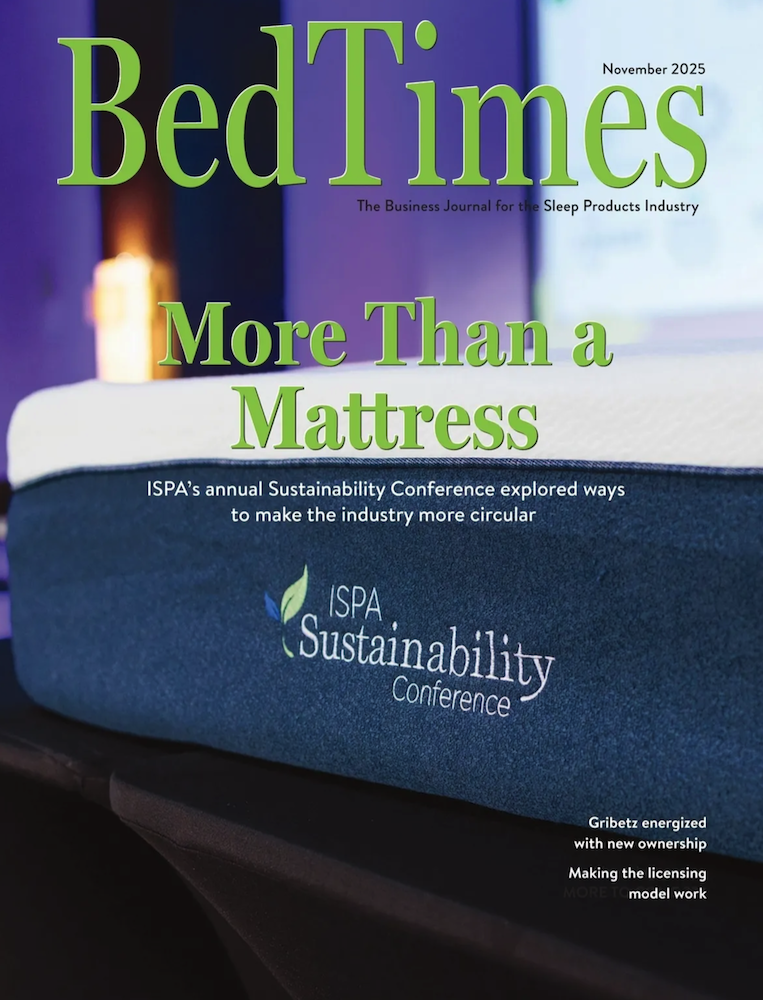Discover the leading innovations in today’s sewing machinery industry as manufacturers create smarter, more adaptable and sustainable machinery to meet the increasing complexity and customization of bedding products.
As the bedding industry evolves, sewing machinery manufacturers find themselves facing cross-purposes. The industry is embracing technology like artificial intelligence, robotics and automation, machine vision, data analytics, predictive maintenance, Industry 4.0 and the Internet of Things. Demand is growing for equipment that can be customized for high-end design aesthetics, specialty fabrics, hybrid constructions, complex fabric handling and intricate stitching patterns without extensive retooling. Yet, despite this level of sophistication, flat consumer demand, skilled labor shortages and scarce resources are forcing manufacturers to achieve more with less.
Adapting to Industry Shifts and Skilled Labor Shortages
Since its acquisition by Montgomery, Texas-based ABM International in March, Gribetz has been focused on innovation and customer care, says Paul Block, president of sales.
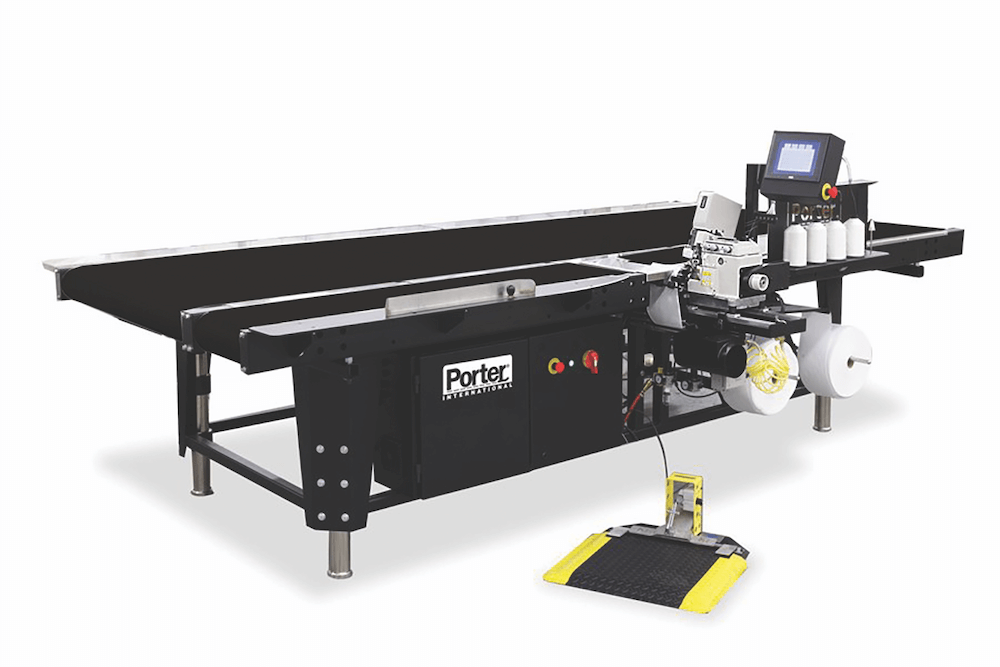
According to Block, the combination of ABM International’s engineering team, technical know-how in building machinery and the standards established by Gribetz and sub-brands such as Porter and Galkin are driving the Sunrise, Florida-based supplier’s continued innovation in machinery design and service.
“Product-related innovations are driving engineering, but the lack of skilled labor available for manufacturers in the United States is driving product development,” Block says. “A machine that will allow an unskilled operator to produce a quality product is truly in demand.”
At Interzum Cologne 2025 in Germany, Gribetz showcased two partners to reduce nonvalue-added labor costs: Waste Exit, which eliminates touch points for scrap from quilters, flangers and border sergers; and a collaboration with Eton Systems to automate, move and track materials between workstations. Additionally, Gribetz is investing heavily in developing new quilting and specialty border equipment, Block says.
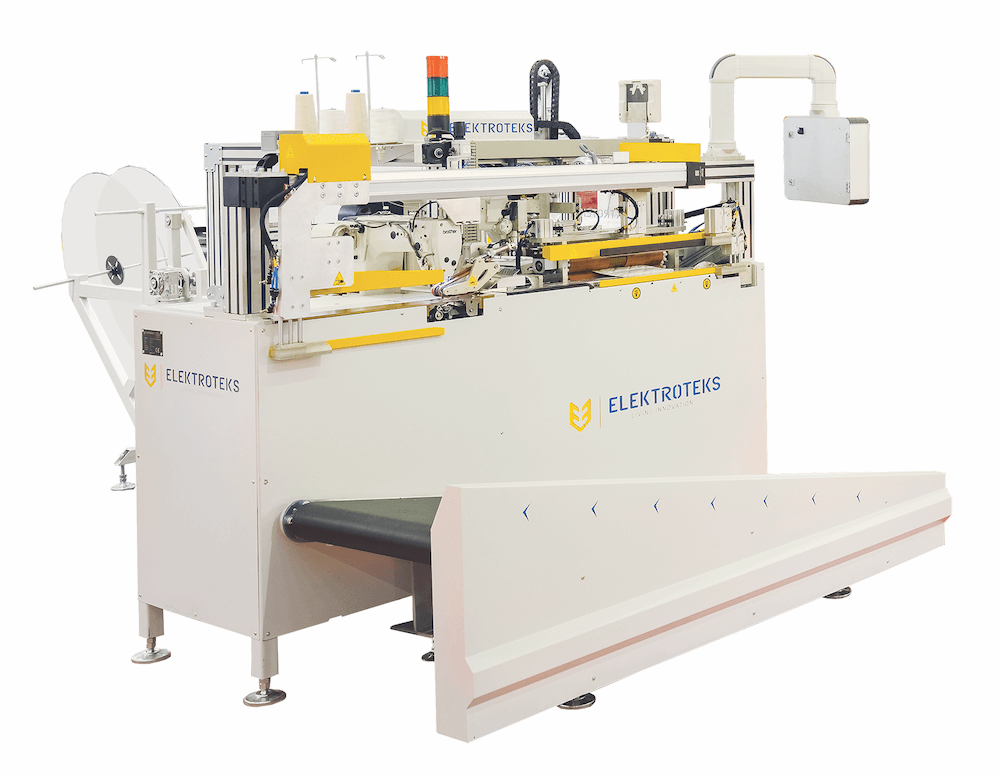
Bursa, Turkey-based Electroteks invigorated its capabilities through the acquisition of Mammut, a 140-year-old industrial quilting machine manufacturer based in Cologne, Germany. “We’ve strengthened our position even further by bringing world-class multineedle quilting and sewing technology into our portfolio,” says CEO Serkan Guler.
Elektroteks’ Bedline concept integrates machines across its portfolio — including automatic gluing, tape-edge, packing and robotics systems — into automated finishing lines engineered for higher production efficiency, consistency and scalability.
“At Elektroteks, sewing is just one element of a much broader production cycle,” Guler says. “We don’t just manufacture sewing machines — we provide complete, integrated solutions designed specifically for the mattress industry.”
At Interzum Cologne in May, Electroteks introduced the heavy-duty MPX series hemming line, which integrates directly with multineedle quilting machines for high-volume panel production; and the VM7 quilting machine, which Guler says is the “fastest machine in the world for producing comforters and duvets.”

United Mert Makina’s vice president and board member Michael Porter Jr. succinctly described the Delray, Florida-based mattress machinery supplier’s aggressive growth strategy: “If you aren’t growing, you’re dying, and we are always thinking of new ways to grow our sewing machinery every single day.”
After a 2024 slowdown, Porter says UMM has been “slammed with sales orders and large developmental projects,” including a belt-table flange machine that can be run by unskilled operators and a direct drive motor flanger Porter claimed has “the highest needle height in the world.”
New England Needles, a longstanding supplier of sewing needles and machine partsbased in Burlington, Connecticut, has seen significant growth since launching its proprietary SttchEX sewing line at ISPA EXPO 2024. “What drove New England Needles to start designing and building our own line of SttchEX machines is machine reliability, service support, parts availability and machine automation,” says Aaron August, president and owner.

August says SttchEx’s growth has been driven by two machines: The NEN-4127, a variable flange machine built to reduce needle deflection, improve sewing precision and handle materials of different thicknesses on a single platform; and the NEN-5127, a high/low walking foot binder that simplifies maintenance, closes seams and crosses tape lines efficiently, and improves durability of mattress bucket assembly.
Updated versions of both machines and another new line will be announced at ISPA EXPO, March 10-12, 2026, in Orlando, Florida. August says the company is also developing a series of smart ergonomic workstations designed to reduce operator fatigue and enhance safety across all sew-room environments.
Addressing Labor Shortages Through Deskilling and Automation
One of the sector’s most persistent challenges — the shortage of skilled labor — continues to drive demand for simplified, deskilled sewing operations.
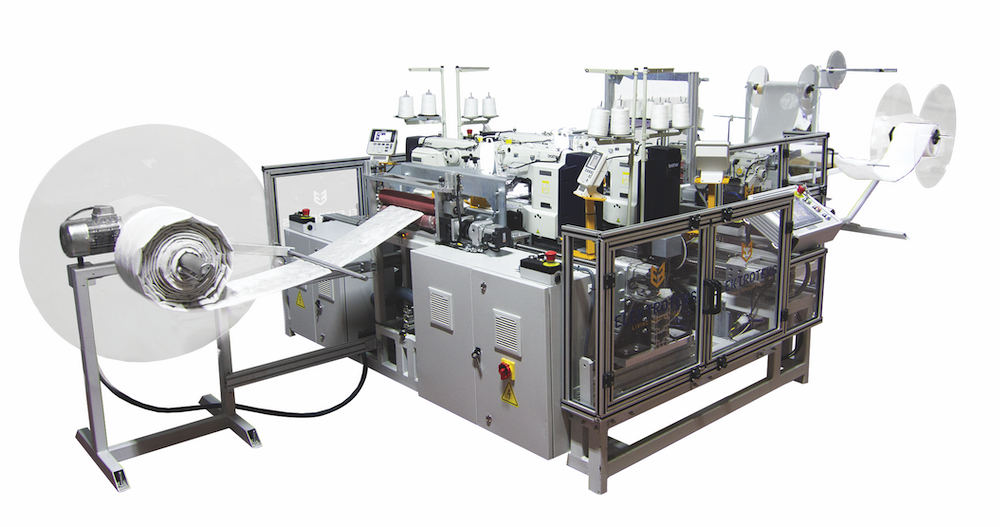
in a variety of shapes, including circles, rectangles and other figures.
“(For a long time), sewing expert operators were essential to the production of a quality mattress,” New England Needles’ August says, “but as equipment advances and more automation is introduced, the need for skilled operators is declining.”
“Sewing is still one of the most labor-intensive parts of mattress production, and as automation grows, so does the need for people who understand both traditional sewing and modern tech,” Electroteks’ Guler says. “But the reality is, the talent pool is shrinking.”
To address this, Elektroteks is developing flexible, user-friendly machines with advanced material handling systems that minimize manual input through automatic feeding and tension control, batch mode and recipe management systems. “As labor continues to be a global challenge, developing more intuitive systems that reduce operator dependency will be key for long-term success,” Guler says.
Gribetz’s strategy is to build systems that integrate with other equipment to increase productivity and rely less on skilled labor. Block says Gribetz also has “a service team standing by and a stable of advanced technical resources to help them keep these machines production ready at their customers’ facilities and operating properly every day.”
Adapting Machinery for Diverse Materials
Another major hurdle is adapting to denser, thicker and more complex mattress materials.
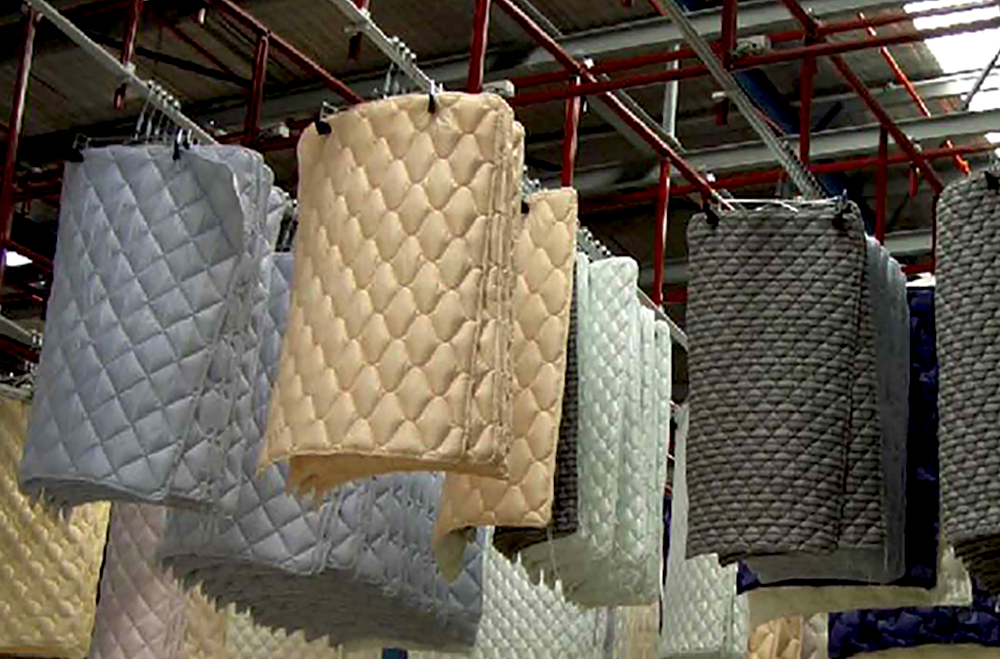
“Successful sewing machinery is evolving into heavy-duty machinery as the materials are becoming denser, thicker, more durable, and made with woven and synthetic materials,” August of New England Needles says.
Porter says UMM’s latest sewing machinery incorporates features like variable, top- and bottom-feeding systems that prevent these materials from becoming “a real headache for mattress producers.”
According to Block, Gribetz machines are built for maximum flexibility and ruggedness, enabling specialty and synthetic fabrics to run on a single machine. As new materials are introduced, including heavier quilt packages, Gribetz can adapt equipment to meet changing production needs, transitioning between materials without sacrificing stitch quality, speed or efficiency.
Elektroteks incorporates features such as automatic material feeding, precise tension control and variable speed drives to accommodate everything from thick hybrid constructions to delicate stretch knits. “Our hardware is designed to adapt to different fabrics and stitching patterns on the fly,” Guler says.
Elevating Aesthetics with High-End Machinery
Manufacturers that cater to affluent and aspirational consumers — and drive higher margins — need machinery that can craft intricate designs and luxurious textures without sacrificing efficiency or quality.
“Customers today don’t just want a durable and functional product; they also want their mattress to look and feel more premium,” Guler says. “This shift in expectations has led to increased interest in our CNC and tack and jump border sewing lines, which give manufacturers the ability to add more design variety and create a higher-end visual appeal.”
New England Needles is prioritizing the quality of its stitchwork in high-production environments. “There is a fine line when determining which processes can be automated,” August says. “The biggest challenge is maintaining the quality of stitches as technology and innovation continue to develop.”
The Role of Automation and Smart Technology
Technologies like automation, Industry 4.0 and the Internet of Things are critical to overcoming many of these challenges facing the sewing industry.
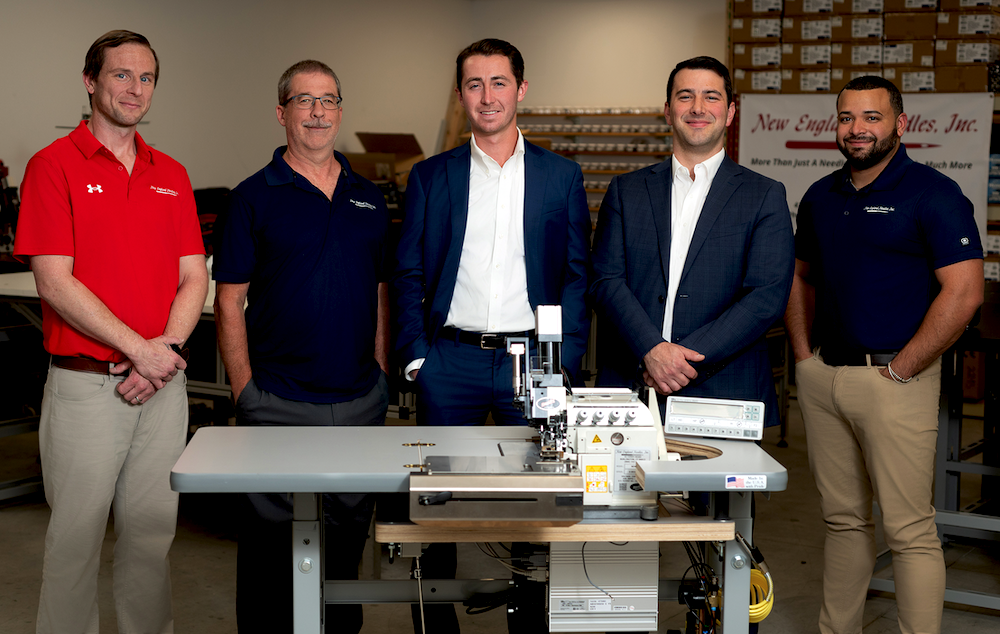
Gribetz sewing machines support high-level factory automation and intelligent control, monitor performance and generate detailed data and analytics for consistent product flow. For example, Gribetz partnered with Eton Systems to automate material handling and track real-time productivity across workstations, while the Gribetz Auto Schedule Next tool automates quilt production scheduling, reduces manual input and optimizes throughput. “This needs to be considered not only in the machinery design, but in the control of the product components,” Block says.
New England Needles’ IoT systems track real-time production data — including pieces per hour, efficiency and time stamps — giving production managers the edge through predictive maintenance and deskilled operations. Programmable software, automated labeling and multipurpose sewing stations also keep production agile and efficient. “These insights will help production managers see where the strong and weak points of their operations are,” August says.
With features like human-machine interfaces, onboard computers and recipe-based controls, Elektroteks’s semiautomated systems help reduce manual labor and make real-time adjustments without stopping production. Built-in sensors and smart interfaces also feed factory networks real-time data — such as stitch quality, motor performance, and machine health — to reduce downtime and improve product quality.

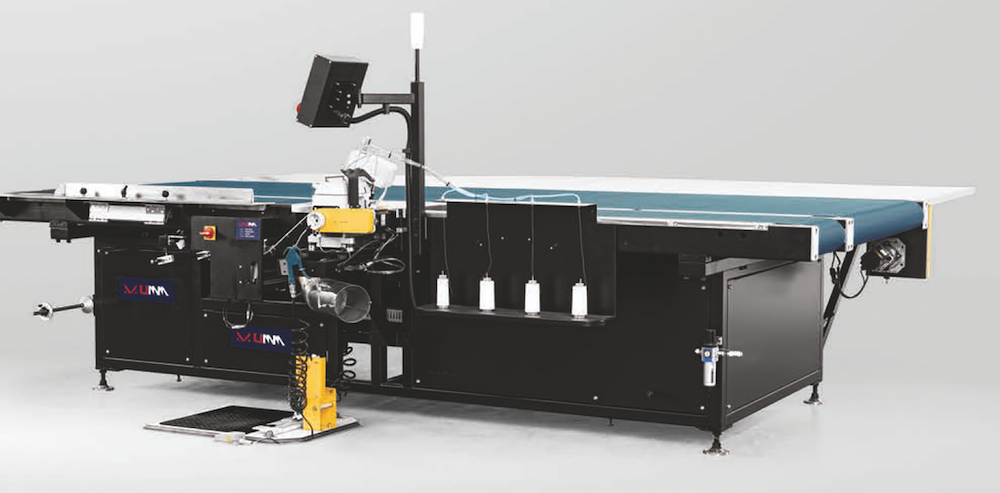
Gribetz is exploring AI for predictive maintenance and adaptive stitching, robotics for automated material handling, machine vision for instant quality checks and integrated enterprise resource planning and material requirements planning systems to streamline production flow. Ultimately, the company aims to help mattress manufacturers produce more customized, high-quality products faster, with fewer errors, minimal downtime and less waste, Block says.
“Sewing machinery has had to evolve fast,” Guler says. “It’s no longer just about speed — manufacturers now expect versatility, intelligence and seamless integration across their production lines.”
The Ongoing Importance of the Human Factor
Despite the gains made through advanced technology, human skill is still essential to sewing machinery makers and bedding manufacturers.
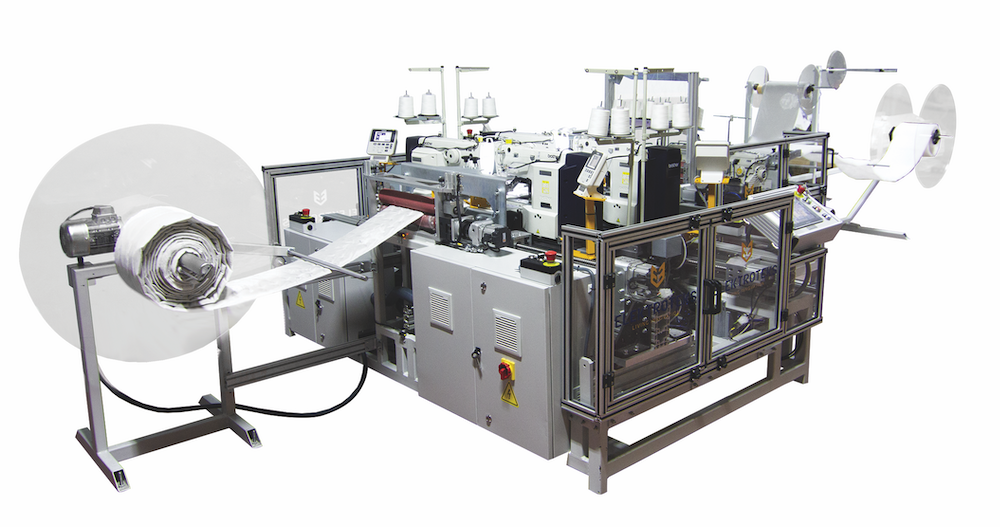
“The truth is — materials like foam and fabric don’t behave like other industrial components. They bend, stretch and shift — which makes them tough to handle through full automation,” Guler says. “A lot of so-called automated systems still need an operator to feed or guide the material. We’ve come a long way, but fully hands-free sewing lines — what people often call ‘sewbots’ — are still something the whole industry is working toward.”
UMM’s Porter summed up this sentiment by saying, “Unless you are gluing foam slabs together and using a sock cover on a low-quality mattress, high-quality mattresses will always require significant human interaction.”


